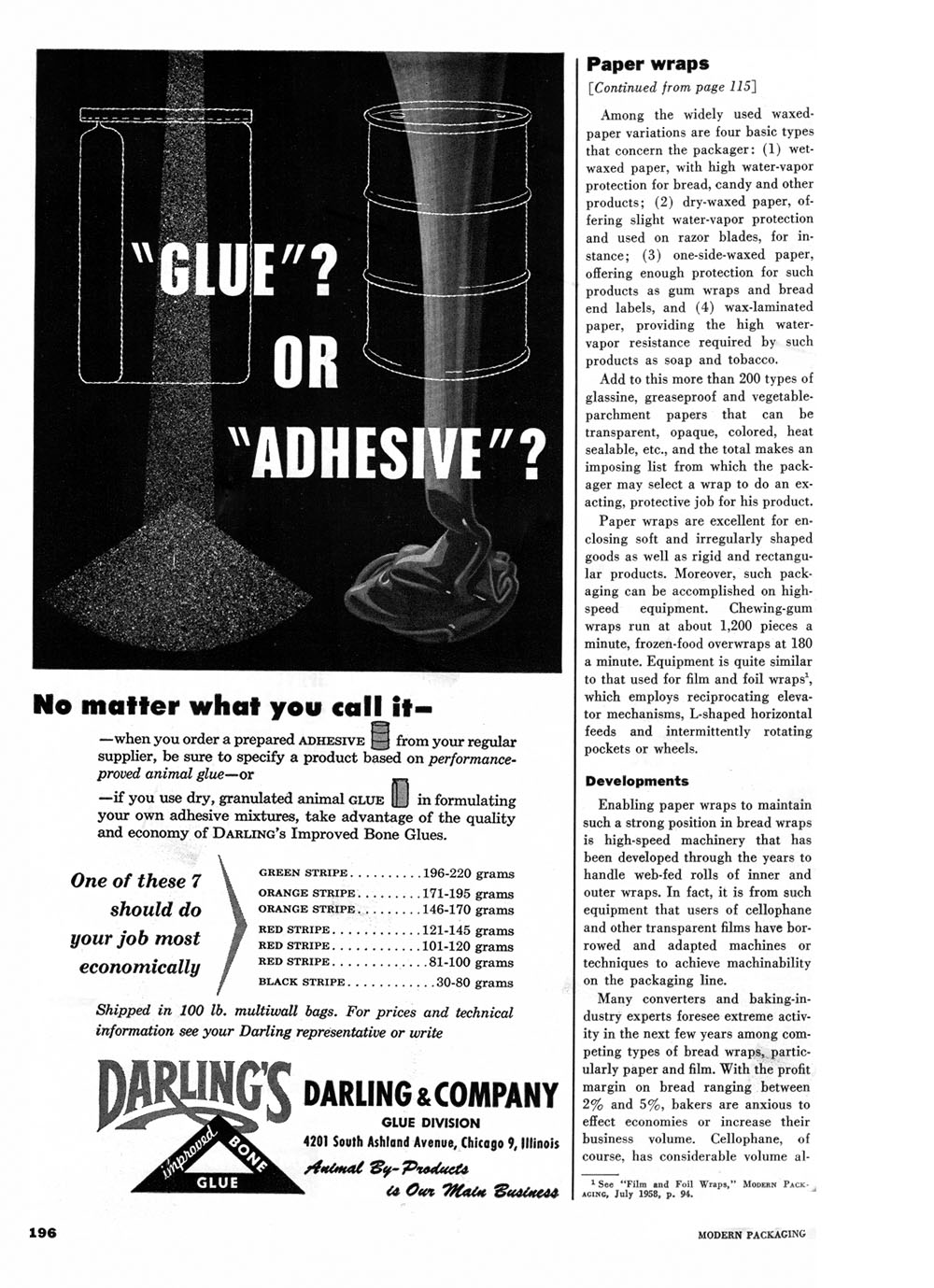


No matter what you call it-
when you order a prepared adhesive Q from your regular supplier* be sure to specify a product based on performance-proved animal glue - or
if you use dry, granulated animal glue [jŌģø! in formulating your own adhesive mixtures, take advantage of the quality
and economy of DarlingŌģø Improved Bone Glues.
One of
shoul your job economically
GREEN STRIPE......... . 196-220 grams
ORANGE STRIPE.........171-195 grams
ORANGE STRIPE.........146-170 grams
RED STRIPE............121-145 grams
RED STRIPE............101-120 grams
red stripe. ........... .81-100 grams
black stripe ............ 30-80 grams
Shipped in 100 lb. multiwall bags. For prices and technical information see your Darling representative or write
DARLING&C0MPANY
GLUE DIVISION
4201 South Ashland Avenue, Chicago % Illinois
44 0m "ś7PC&4*
Paper wraps
[<Continued from page 115]
Among the widely used waxed-paper variations are four basic types that concern the packager: (1) wet-waxed paper, with high water-vapor protection for bread, candy and other products; (2) dry-waxed paper, offering slight water-vapor protection and used on razor blades, for instance; (3) one-side-waxed paper, offering enough protection for such products as gum wraps and bread end labels, and (4) wax-laminated paper, providing the high water-vapor resistance required by such products as soap and tobacco.
Add to this more than 200 types of glassine, greaseproof and vegetable-parchment papers that can be transparent, opaque, colored, heat sealable, etc., and the total makes an imposing list from which the packager may select a wrap to do an exacting, protective job for his product.
Paper wraps are excellent for enclosing soft and irregularly shaped goods as well as rigid and rectangular products. Moreover, such packaging can be accomplished on highspeed equipment. Chewing-gum wraps run at about 1,200 pieces a minute, frozen-food overwraps at 180 a minute. Equipment is quite similar to that used for film and foil wraps1, which employs reciprocating elevator mechanisms, L-shaped horizontal feeds and intermittently rotating pockets or wheels.
Developments
Enabling paper wraps to maintain such a strong position in bread wraps is high-speed machinery that has been developed through the years to handle web-fed rolls of inner and outer wraps. In fact, it is from such equipment that users of cellophane and other transparent films have borrowed and adapted machines or techniques to achieve machinability on the packaging line.
Many converters and baking-industry experts foresee extreme activity in the next few years among competing types of bread wraps, particularly paper and film. With the profit margin on bread ranging between 2% and 5%, bakers are anxious to effect economies or increase their business volume. Cellophane, of course, has considerable volume al-
1 See "Film and Foil Wraps,"Ø Modern Packaging, July 1958, p. 94.